gateway charcuterie – goose prosciutto
I have not gone mad I assure you. I think. This is not a slap on my own face regarding what I just said about people not keeping it realz, I assure you again. I think… Yeah, I’m pretty sure. I tell you why.
Because as insane and possibly snobby as it certainly seem to attempt the complex scientific art – charcuterie at home, it isn’t entirely true. Some basic charcuterie can be more than doable if you know how to utilize the equipments you may already have (ALL YOU NEED is WINE FRIDGE!). But more importantly than the how, I’m going to assume most people are more fixated on the why. Why is right. Why would ANY wallet-abled individual invest the hours, days, weeks, months EVEN YEARS in something that is sold commonly with a justifiable margin of profit? It’s like sewing your wedding dress. Well, as the founding ground of this blog and my own sanity compass – that curbs me from drifting into the dark side – goes, I assure you that I only do it because I have to.
The heavenly assortment of cured sausages and hams may come as given to all thy Western citizens, but not us. Us the eternally banished, to the unpolished land of no-happiness and cured porky things, are howling with hunger for the joy lost in receding memory. Availability to such things is luxury. Even the humble conduct of living as simple as good pancetta is a bourgeois life. The only thing I’m trying to prove is that you are luckier than me if you don’t have to do this. I’m not crazy. I’m… not…
But having said that… it’s dangerously easy to develop a romantic notion to a craft as delicate as such. It is an ancient tale about a beautiful rebirth that abides to the absolute laws of time. There is no streamlining, shortcutting or any clever bypass to pull. To be good at charcuterie, you have to submit to the process. To be great, you must be infatuated by it. It’s a sentimental relationship that you form and then nurture from, that every sense of satisfaction and content to wake up to it, breathe with it and the occasional squeeze and hand-feel that speaks a message only the two of you could understand. You adore each other even though in times you share passionate disagreements, until however-long in the end, it thanks you in a bittersweet farewell then melts into joyful sensations in your mouth. What can it be but romance?
But again I only do this because I have to, I ASSURE you. I think.
* Goose/duck prosciutto is a gateway-charcuterie, one of the easiest to succeed at home. The entire process only takes 8 ~ 10 days and is almost foolproof.
** The duck prosciutto in the book is cured by kosher salts only, which I have tested a few time and found it crudely salty. Ever since I’ve been using the basic cure mix instead, which has the balance of sugar to ease off the sharp edges of salt. The basic cure mix calls for something called the “pink salt” which is the only thing that may strike a fear of unfamiliarity in this post. Without going into details, you should know that its main purpose is to “prevent botulism poisoning”, and can be harmful if consumed in LARGE QUANTITY, so treat appropriately. You can omit it in THIS PARTICULAR recipe since it wasn’t used in the original, but I would recommend getting familiar with it if further charcuterie-exploration is what you have in mind.
*** ON MEASUREMENTS FOR THE BASIC CURE: The book clearly stated to measure the cure-mixture by WEIGHT, NOT VOLUME, as different brands of salt vary LARGELY IN WEIGHT. The salt I used is Morton’s kosher salt which weights similarly as granulated sugar, therefore if measured by volume in small quantity, it may not have made a huge difference (as the quantity grows, the gap between the difference will increase). But if using say Diamond Crystal kosher salt (as also mentioned in the book) which weights significantly LIGHTER (roughly 40% less), then the difference is HUGE. So you should do what the book says, not what I did.
**** The quality of charcuterie can only grow upon a basis set by the quality of the ingredients. I have attempted duck prosciutto using breasts from non-credible sources that were frozen for God-knows-how-long, and they tasted like shit. This time I used breasts that I separated from a whole goose that was clean and fresh, and the difference was DAY AND NIGHT. So please, use good breasts.
Ingredients: adapted from Charcuterie by Michael Ruhlman & Brian Polcyn
- Basic cure mix: (by weight) ***
- 9 parts kosher salt
- 4.5 part granulated sugar
- 1 part pink salt/DQ curing salt/DC curing salt
- 2 high-quality goose breast, or duck breast ****
- Italian Grappa
- Ground white pepper
- Smoked paprika
Equipments:
- Butcher’s twine
- 2 pieces of Cheese cloth, each approx 8x the size of the breasts
- Wine fridge with temperature and humidity control (fan-circulated system)
- Optional: temperature and humidity meter
- Optional: 2 reusable ice packs
Supply-source: provided by the book (all sausage-making supplies, including pink salt, can be easily purchased below)
Rinse and clean the goose/duck breasts really well, then pat it as dry as you can with a clean towel. Trim off uneven edges of skin if any and set aside. Measure every ingredients in basic cure-mix, and whisk together evenly. You can make a large batch, or a small one that’s just enough for this instance.
Look for a container that fits the 2 pieces of goose/duck breasts as perfectly as possible. The better the fit, the less cure-mix you’ll need or goes to waste. Spread 1 layer of the cure-mix evenly on the bottom of the container, at least 1/8″ (0.5 cm) thick. Arrange the goose/duck breasts on top, leaving a small gap of room in between and around. Then cover the breast and every gaps/space in between COMPLETELY with more cure-mix. Cover with plastic wrap and chill the the refrigerator for 24 hours, flipping it once during the process but making sure to redistribute the salt to completely cover the breasts. Check the breast after 24 hours, which should have lost a lot of water, feel dense not squishy, and the color significantly darken.
Take the breasts out and rinse off the salt thoroughly. Pat as dry as you can with a clean towel. Brush a thin layer of Italian Grappa all over the breasts and let it dry off for 10min. Then brush them again, and dust both sides liberally with ground white pepper. Wrap each breasts tightly with the cheese cloths. Tie them according to the instruction from the pictures, and hang a small tag noting the current date.
If you have a space in your house with an optimal dry-age environment (50 ~ 60ºF/8 ~ 15ºC with 60% ~ 70% humidity and good air-circulation), then congratulations. If not, the wine fridge is designed to simulate just such (50 ~ 65ºF/10 ~ 18ºC with 55% ~ 80% humidity). YAY~… but I strongly recommend testing your wine fridge with a temp/humidity meter. It’s inexpensive and helps you control the dry-age environment more accurately. If the temperature sits stubbornly above 60ºF/15ºC, simply place a couple of reusable ice-packs (keep 1 or 2 in the freezer for rotation) which should bring the temperature down effectively for up to 24 hours. Or if you have a truck-load of never-ending ice-cubes, a large bowl of it would achieve the same thing. The water from the melted ice-cubes also help maintaining a good level of humidity.
Hang the breasts in any of the above, optimal dry-age environment for 7 days. During which the breasts would loose a lot of moisture and shrink in sizes. Not enough humidity would result in the surface drying out before the center has a chance to. So pay attention. Too much humidity (above 75% ~ 80%) would prolong the dry-age process. Give the breasts a squeeze-test after 7 days, which should feel dense and firm (not soft and squishy like a piece of raw meat). If still feels soft, age for another 1~2 days.
The best way to keep goose/duck prosciutto is to unwrap them from the cheese cloths, vacuum-pack it and store in the fridge. But if you don’t have a vacuum-packer, then just remove the cheese cloths, wrap the goose/duck prosciutto tightly with plastic wrap and keep in the fridge for up to 4 ~ 5 weeks.
To serve, slice it as thinly as you humanly can (it’s easier to slice when it’s cold). I like to dip it in a whiff of smoked paprika.

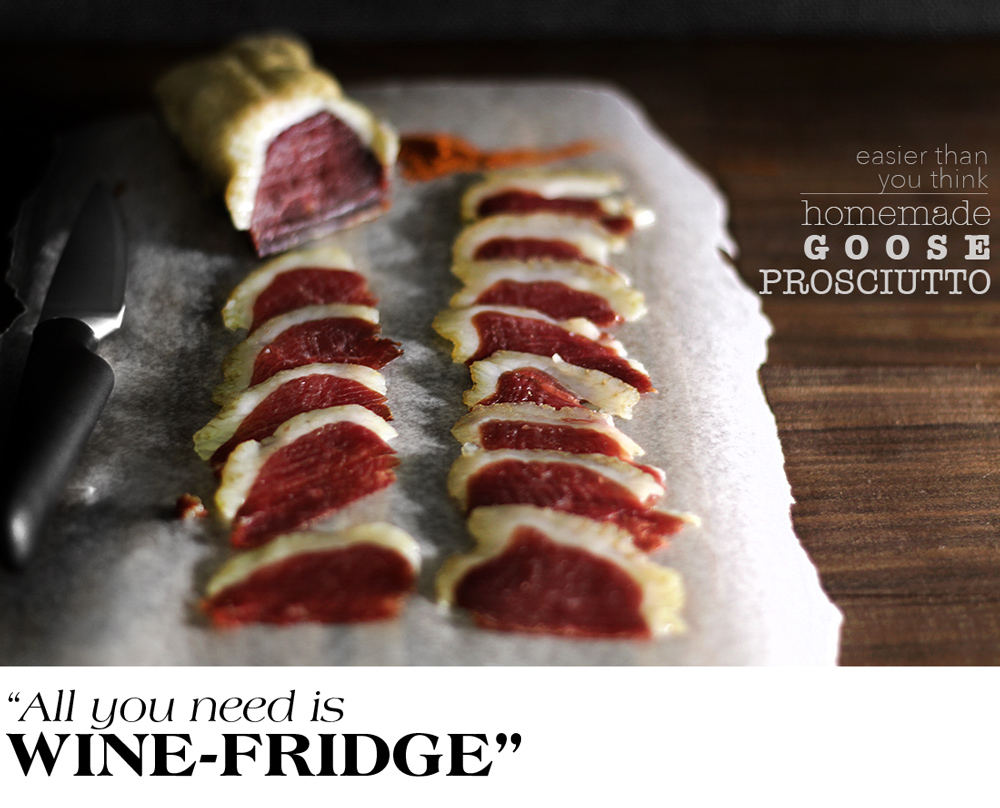
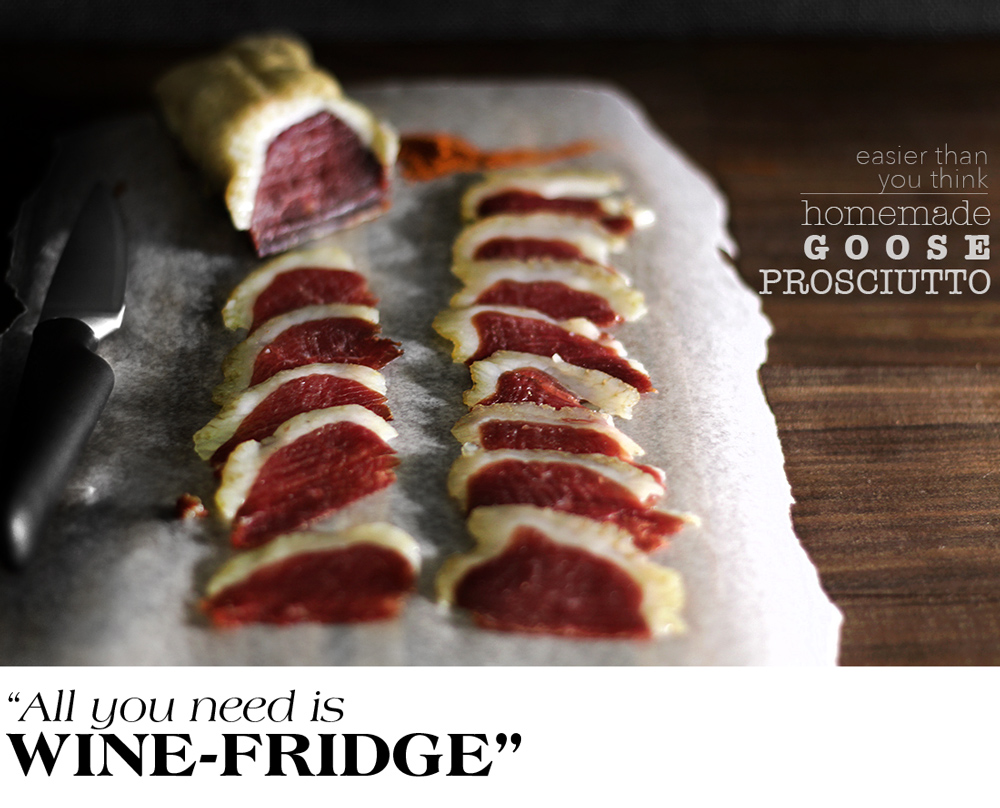
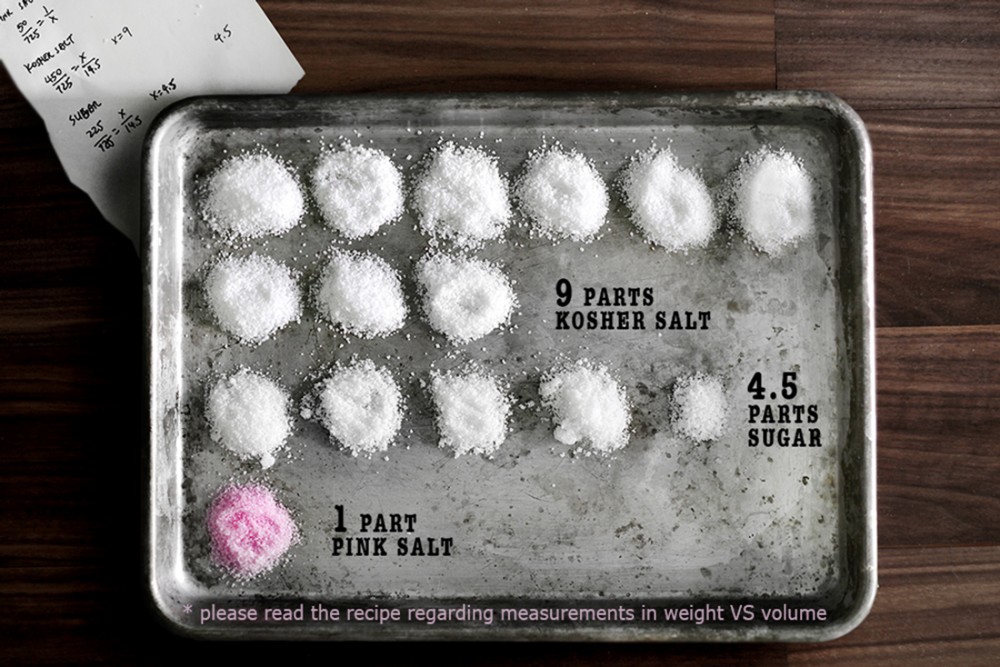
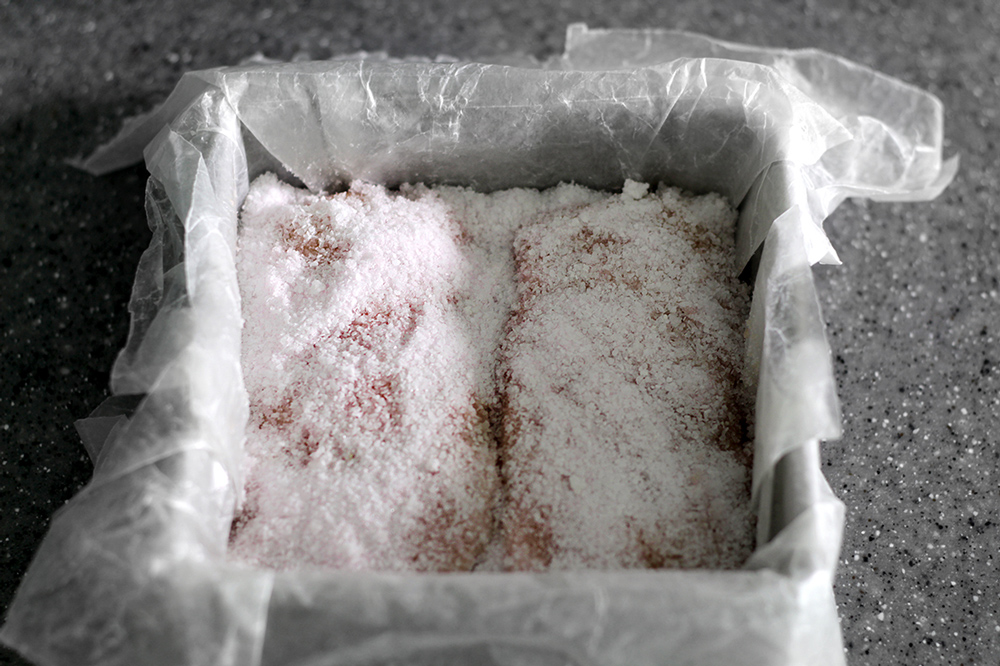





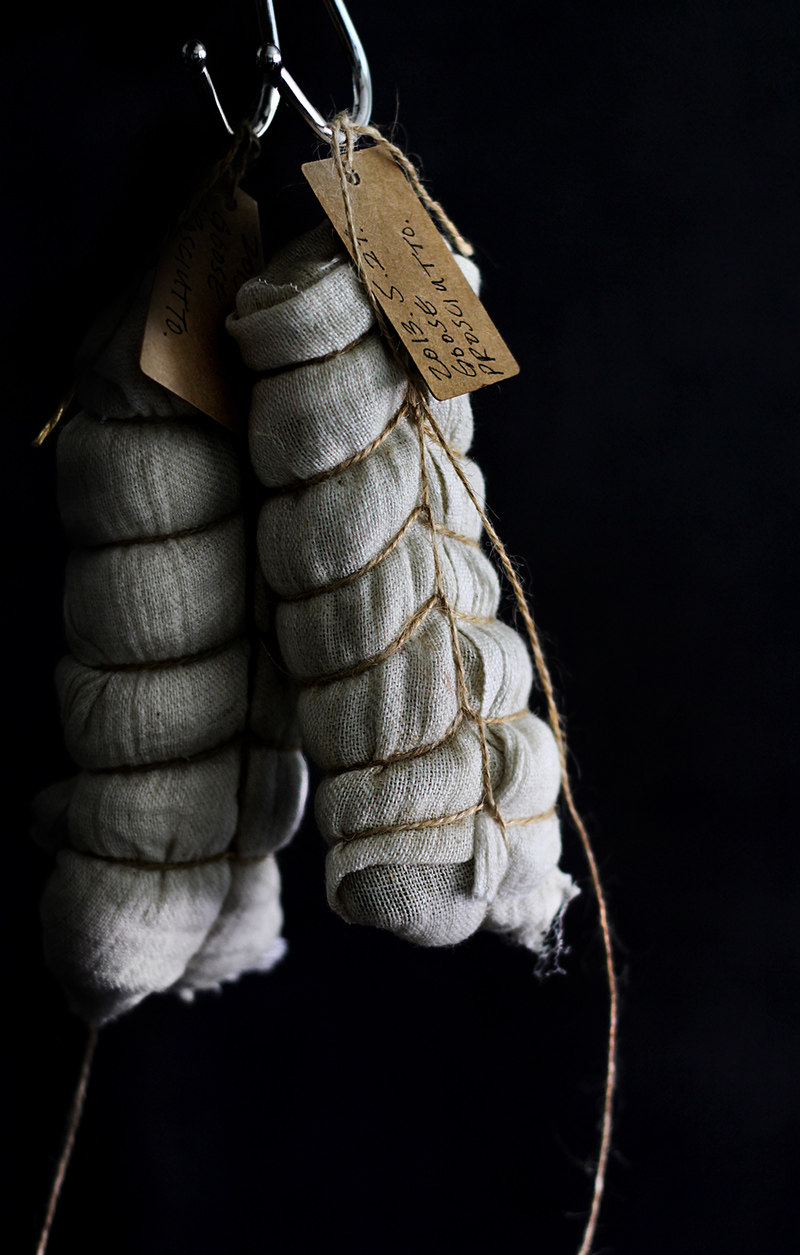
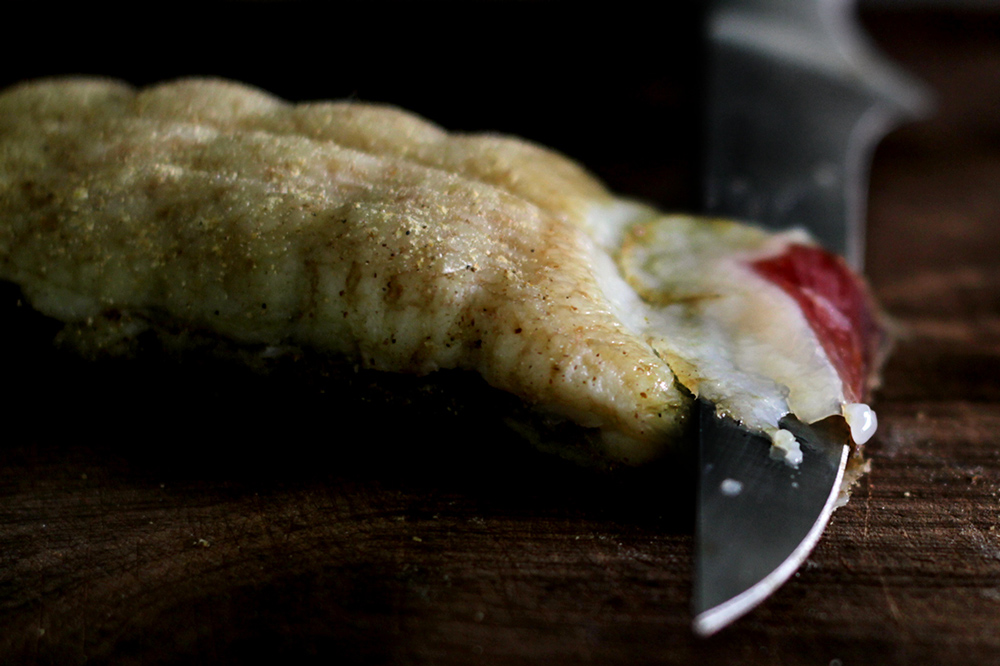
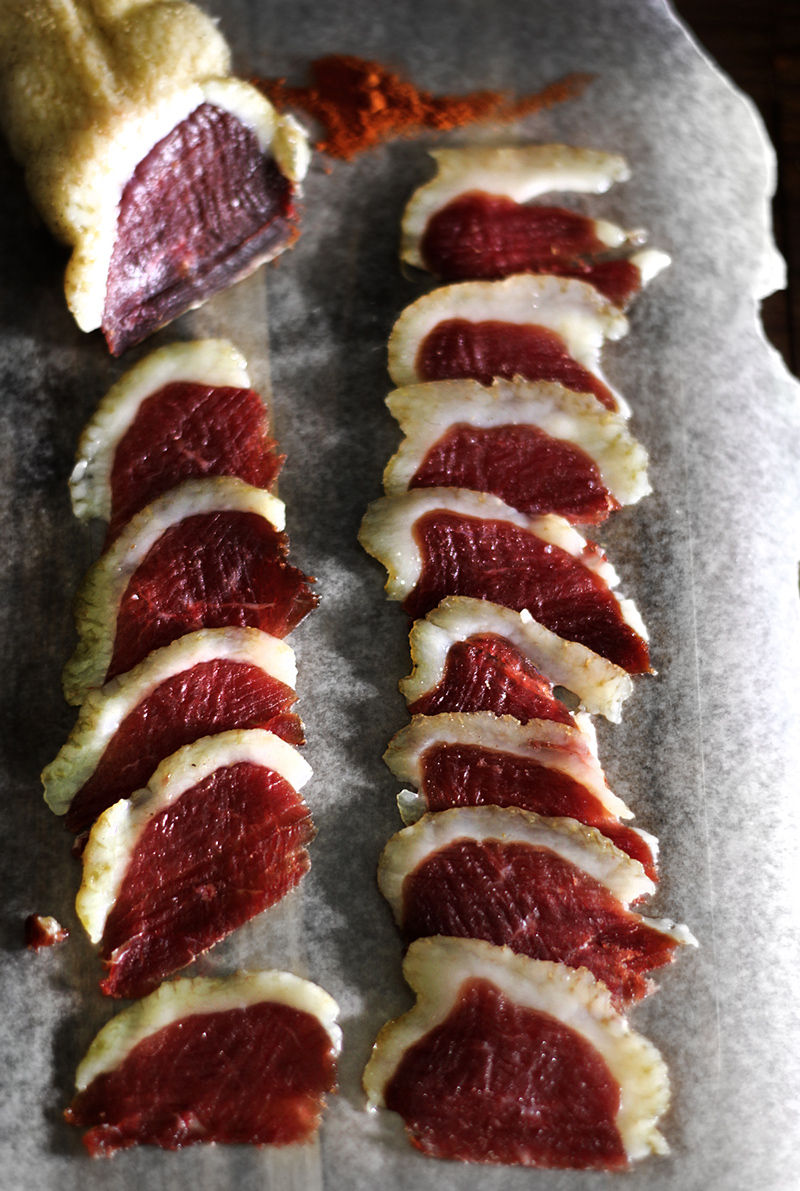
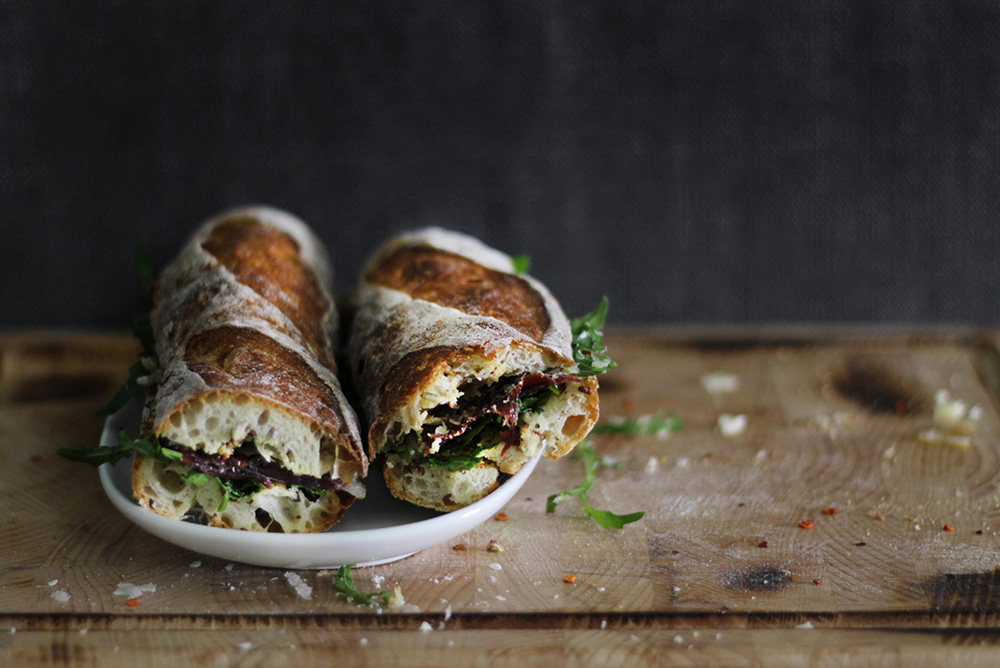

Alice // Hip Foodie Mom
06.10.2013at11:03 PMoh my gawd. this is amazing, love!
Tsofiya
06.11.2013at11:18 PMwow this is just brilliant! thank you for sharing!
Shanna
06.11.2013at11:27 PMWhat do you do if you only have a normal fridge?
Mandy L.
06.12.2013at12:54 AMShanna, there are ways/instructions on the internet showing people how to turn a normal fridge into a dry/age cellar but it takes quite a bit of work. A normal fridge in its common environment is too dry, and too cold for dry/aging. Even though Michael Chiarello has a duck prosciutto recipe in his Bottega cookbook that ages in the normal fridge but I have never tried it, and that particular recipe takes a lot longer, too. here’s the link of the book: http://www.amazon.com/Bottega-Italian-Flavors-Californias-Country/dp/0811875393/ref=sr_1_3?s=books&ie=UTF8&qid=1370969448&sr=1-3&keywords=michael+chiarello. I will take a look at it and post it in summary in the comment area tomorrow.
Mandy L.
06.14.2013at5:59 PMSorry for the late reply. So here’s Chiarello’s duck prosciutto recipe using normal fridge (it takes approx 42 days in total!!!):
Ingredients: (mix together evenly)
1/2 cup plus 2 tbsp of kosher salt
1 tsp of coarsely ground black pepper
3 juniper berries, finely minced
pinch of ground cloves
2 dried bay leaves, crushed finely
Rinse and pat dry two duck breasts (two sides from 1 whole duck). Lightly season the meat-side of both breasts with salt-mix then tie them together with the meat-side touching each other. Lay a pan with cheese cloth and scatter 1/2 of the remaining salt-mix on the bottom, then lay the breasts on top and rub the rest of salt-mix evenly over the breasts. Cover with plastic wrap and refrigerate for 9 days (every 3 days, turn and rub/redistribute the salt evenly and wipe excess liquid off). After 9 days, replaced the used salt-mix with a new batch of salt-mix, and repeat the steps for another 12 days (21 days in total).
After which, clean off the excess salt off the breasts with damp towel, and brush Grappa on the surface. Wrap/tie them tightly inside a cheese cloth and hang in the back of the fridge, with a pan underneath to catch dripping, for another 21 days. Now the duck is done curing/aging. Brush with more Grappa, wrap in plastic wrap and keep in the fridge for up to 30~40 days.
Shanna
06.15.2013at4:30 AMThank you soooo much! I am going to try this for sure! :)) you rock!
Lara
06.12.2013at1:35 AMThis is so cool! The meat looks just amazing!
Linda
06.18.2013at11:04 PMWow, that looks amazing!! I’ve always wanted to try making duck prosciutto. Thanks so much for the inspiration.